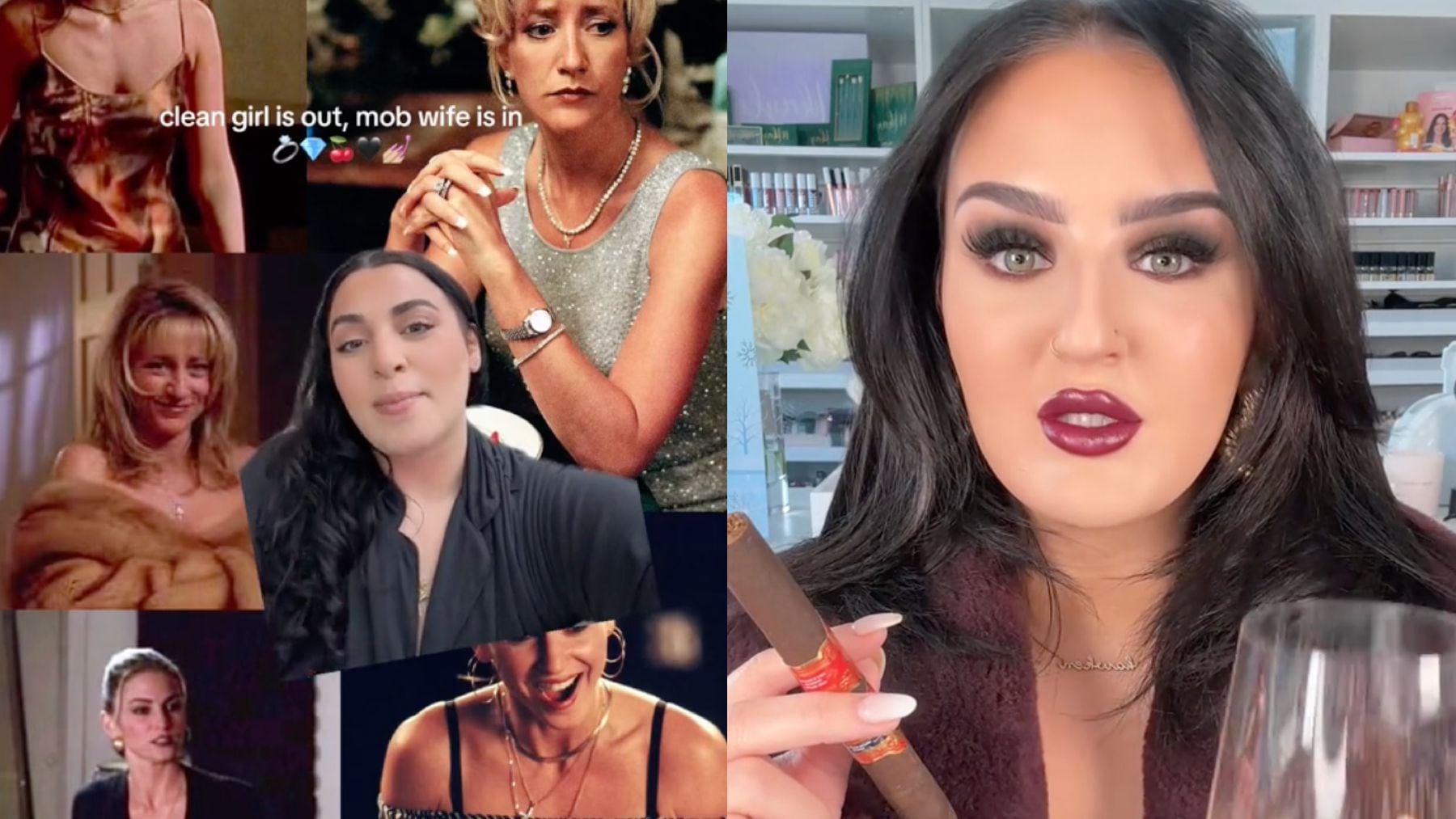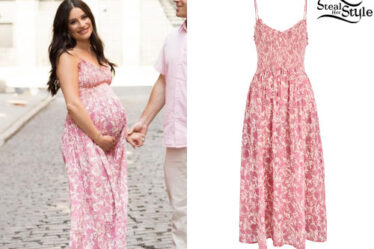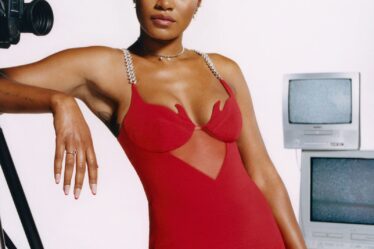
It’s the clash of no-makeup makeup versus, well, makeup.
In early January, influencer Kayla Trivieri earned over 1.7 million views on her viral TikTok video proclaiming that the minimalist “clean girl” beauty trend is “out” and that the “mob wife” aesthetic, complete with big hair, heavy makeup and fur coats, is “in.” Now with over over 175 million views, the #mobwifeaesthetic hashtag has been used by powerhouse influencers like Mikayla Nogueira and Christen Dominique posting full-coverage, glamorous makeup tutorials.
Posted just days after Warner Brothers Discovery launched a TikTok account for “The Sopranos” as part of a 25th anniversary marketing campaign, the trend’s virality has spurred speculation that a publicity stunt is afoot. Warner Brothers Discovery did not respond to a request for comment, but in a call with The Business of Beauty, Trivieri said her post was completely organic. Beyond Edie Falco and Drea de Matteo’s beauty looks in “The Sopranos,” Sharon Stone and Michelle Pfeiffer’s turns in “Casino” and “Scarface” have served as inspiration for makeup looks.
“It was more inspired just by what I’m seeing on my feed and what I was seeing outside in New York City. I’ve been noticing a lot of people wearing vintage fur coats,” said Trivieri. In beauty, “I’ve been hearing a lot of creators saying to me, ‘I miss 2016 glam and doing full-face makeup.’”
The traction on Trivieri’s post is the latest example of the ongoing glam vs. minimalism divide in the online beauty world. Influencers supporting either aesthetic can drive major sales, and brands are navigating where they should fall on the spectrum.
‘No-Makeup Makeup’ Evolves for Gen-Z
Nearly a decade ago, “no-makeup makeup” was popularised for Millennials by Glossier, contrasting with the excess of the beauty YouTuber. Instead of the Anastasia Beverly Hills Dipbrow Pomade as part of a full face, a class of shoppers turned to Boy Brow and a less elaborate makeup routine.
“There was a permission that Glossier gave people to be able to say, ‘You can do a minimal look and still feel like you’re wearing a little bit of makeup. You can still feel your best.’ At that time, they were the first to [say] that,” said Carrie Barber, a former art director at Glossier who acquired makeup brand Make Beauty in 2020 and relaunched it in 2021.
A take on the no-makeup makeup look that dominated the late 2010s, the hallmarks of the updated “clean girl” look are lip gloss, dewy skin, liquid or cream blush and little to no eye makeup. Celebrities like Hailey Bieber and Sofia Richie are some of the biggest names to have popularised the trend; on TikTok the #cleangirlaesthetic hashtag has over 8 billion views.
Despite backlash, the term “clean girl” maintains 3.3 percent year-over-year growth, according to Trendalytics. Traditionally glam celebrities and influencers like Kylie Jenner and Meredith Duxbury have recently embraced a softer look.
“We’ve seen the push-pull of minimal makeup and complexion focus vs. hyper glam in Spate data since 2021,” said Yarden Horwitz, co-founder of trend analysis firm Spate.
Though Glossier no longer owns the look, as products like Dior’s lip oil and Rare Beauty’s liquid blush fill clean girls’ makeup bags, it has tried to tap into the newer purveyors of the trend. In 2023, the brand worked with Richie for sponsored social media content and a curation of her selections on the Glossier DTC site.
The New Glam
While dewy makeup has its set of diehard fans, there is still newer enthusiasm for a more full-face glam look.
“When the clean girl aesthetic blew up, we basically saw the 2016, 2017, 2018-style makeup die,” said Nogueira on a Zoom call wearing her early Valentine’s Day makeup look complete with vibrant neon pink, sparkly eyeshadow. “When conformity and social norms are so intense, especially in the beauty industry, I’m literally fighting for my life every day to continue to do my makeup like this.”
In addition to the “mob wife” trend, which features dark burgundy lips, copious bronzer and smoky eyes, Nogueira also recently jumped on the #2016makeup look by revisiting heavier makeup hits like the Anastasia Beverly Hills pomade and Tarte’s Shape Tape concealer.
“Mikayla comes from this early 2010s full beat. I still feel like I see a lot of that in her looks. She is one of the top people on TikTok; there clearly is an audience for that,” said Barber.
In a departure from her Glossier days, Barber’s Make is also dedicated to bold pigments and drama. The line released its Multi-Chromaticmetal-Reflecting Eyeshadows in colours such as dark blue and onyx on Jan. 23, with promotional content featuring Barber doing a dramatic smoky eye.
A Sparkly Common Ground
Rather than associating themselves with one aesthetic, popular beauty brands are trying to satisfy both sets of customers. Clean girl favourite Rare Beauty, for example, works closely with Nogueira, who features the line’s Soft Pinch Liquid Blush in her signature makeup looks.
“There are brands who have done an exceptional job of being both, and those are the brands that we’re noticing are the biggest; they’re the ones popping off,” said Nogueira, mentioning Rare Beauty and Charlotte Tilbury as examples. In contrast, brands historically associated with one aesthetic like Morphe – which went bankrupt last year – have “taken a hit,” she said.
Donni Davy, founder of Half Magic Beauty, which is known for its sparkly “Euphoria”-inspired aesthetic, also sees her line as an “elevated” take on the minimal, no-makeup clean girl look. Despite its bold and colourful assortment of bright eyeshadows, face gems and glitter, the brand is not trying to be maximalist, instead adding pops of glitter and colour to the face.
“I do think that a lot of the people that want just the more basic clean girl look, they have found what’s worked for them. They love it; they feel good in it. But that doesn’t mean they don’t want to level up every now and then,” said Davy.


